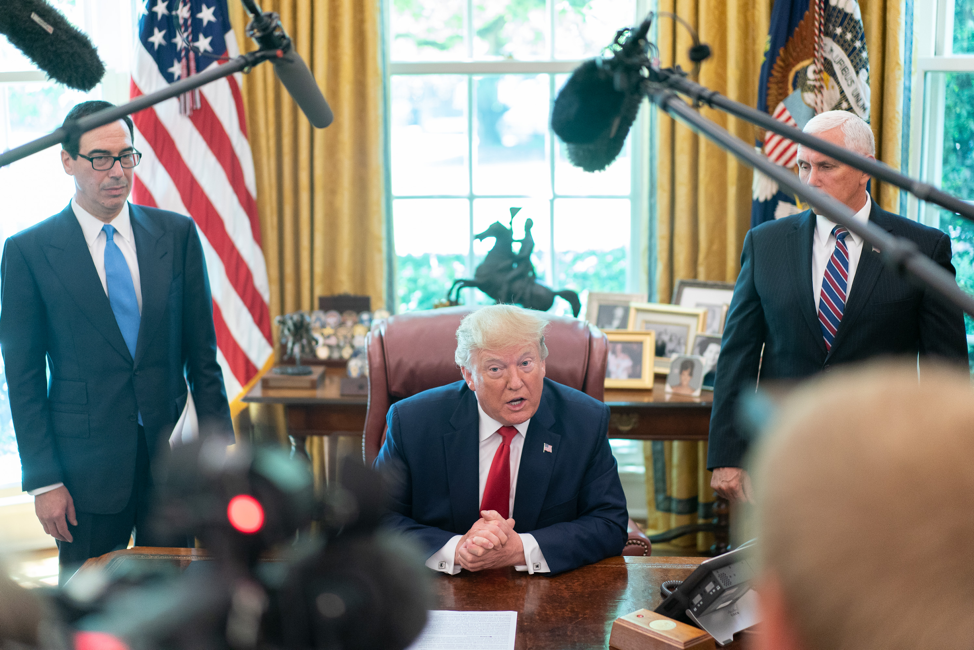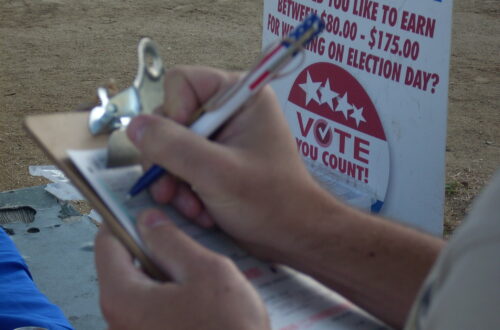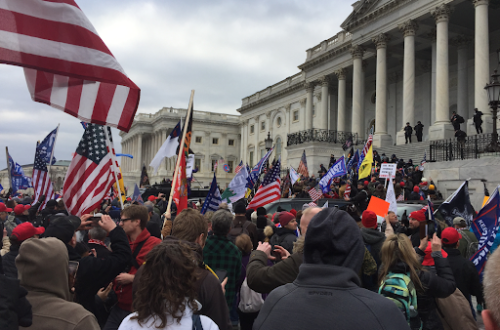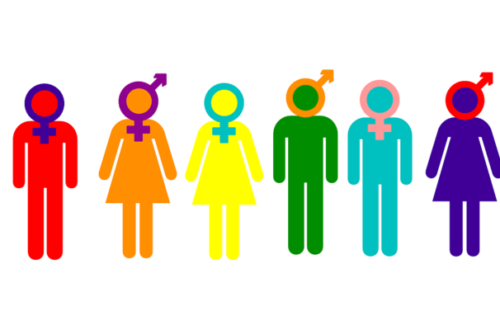The obsession in the news cycle to critique political leaders over their handling of the novel coronavirus often ignores what makes bad decisions good politics. Data analysis uncovers thought-provoking strategies in the relationship between politicians and the American people.
Even though the majority of the public and a disproportionate amount of non-white and female citizens hoped to delay re-opening the country, becoming cautious would not have increased President Trump’s support in these voting blocs. The president’s best strategy was not to reconcile political disagreement between parties but to continue appealing to his base, which tends to be more skeptical of government policy and scientific professionals.
Using a study conducted by researchers from Northeastern, Harvard and Rutgers, we can create a dataset that contains polls from all 50 states. We can add the amounts of tests distributed in each state, according to The COVID Tracking Project.
From this data, we see a small direct correlation between the approval people have for their state’s governors and the number of administered tests. Therefore, increase in approval rating is tied to an increase in tests delivered.
However, if we consider the U.S. at the federal level, then we see something strange. Approval rating goes down as tests administered goes up.*
That means if we include the numbers for Trump, it makes it seem like increasing the amount of tests would actually decrease public approval of their state executive and federal leaders. Why is this so?
The major factors that I suspect explain this discrepancy between the two datasets are as follows:
- Since Trump made sure that downplaying/not overreacting to the virus became a Republican stance, his support of testing and other preventative measures would displease those who were supporting him.
- Governors tend to be seen as less partisan than presidents, which might explain some of the difference.
- Any change in Trump’s rhetoric now would likely not win over those who currently oppose him, even if they were originally in his camp.
But a trend like this also exists between approval rating and deaths. Based on deaths per 100,000 residents, it’s just as strong** for both the 50 states dataset and the dataset of the 50 states plus the U.S. as a whole.
So why would it seem like every increase in a politician’s approval rating is tied to hundreds more people dying?
The answers are tied to a “rally-around-the-leader” effect.
We know that after a major international event, there is usually an uptick of citizens supporting the government. The people in each state have paid unusual attention to governors during the coronavirus epidemic, and as time went on, this attention was retained by questions about state policies toward social distancing, business closures, etc.
A country’s response to COVID-19 and high or low ratios of virus deaths per 100,000 didn’t correlate to changes in citizens’ approval of their leaders. These two measures omit factors such as the working conditions of health professionals and how much ruling politicians’ decisions match up with leading professionals’ advice.
Those factors, while more difficult to quantify, are easier for the public to react to, which is why Japan’s Abe and Brazil’s Bolsonaro both suffered in the polls with the opposite of a rally-around-the-leader effect.
Say what you want about Trump, or on the other end, Governors Cuomo (D – NY) or Beshear (D – KY), but you can’t say they haven’t made their intentions clear. So why did the president lack the rally effect so many governors are enjoying right now? Is it the same for the US as it is for other countries?
Well, lack of cohesion between the states and early reports of infighting over supplies are both instances of blame that cross state lines, falling squarely on the shoulders of the feds and Trump. Willfully ignoring or firing health professionals is also key to public disapproval right now, as seen in the actions of Trump as well as governors like Kemp (R – GA) who has an approval of 39%.
Public disapproval went beyond polls with all the anti-lockdown protests. While I hesitate to use them as the sole measure for this research, they are undeniably a part of the story of COVID-19 in America.
Seven out of the ten states with the highest death rates (deaths per 100,000 residents based on numbers up to April) had protests that tried to open up the government faster. This percentage of protests (70%) is higher than the percentage of states overall (64%).
While all states had already passed their expected dates of peak health system usage (the hump of ‘the curve’), it is strange that residents in states hit the hardest were so vocal.
It wasn’t split along partisan lines much either. If you were a Republican governor, you had a fifty-fifty chance your state got anti-lockdown protests, and it was only slightly more likely if you were a Democrat. Why?
The Dunning-Kruger Effect defines a bias held by people with a little knowledge of a subject assuming they know more than experts when making conclusions. While that does go further to explain the protestors, it also leads me to believe that many more Americans bombarded by information on this novel virus have a sort of inverse Dunning-Kruger effect.
Meaning, from what little they know they are assuming that nobody could know enough to prevent deaths beyond trying to have a firm, cohesive response.
This is the best rationalization I have for why politicians are being supported not for their results, but mostly for the efforts they’ve put forth and how sure or sincere they sounded in them. Likewise, it is both dangerous and endearing.
Dangerous, because this could have been exploited by elites in government or the media to skirt scrutiny through clever marketing.
Endearing, because it painted the picture of we, the people, being a bit more patient and willing to be supportive of all members of our society, even the ones we imagine to be at the top of it.
*0.149 for states only and -0.300 when adding in the federal data
** 0.335 for states only and 0.314 when adding in the federal data
Secretary Mnuchin joined President Trump and Vice President Pence in the Oval Office prior to announcing new sanctions on Iran. (Public domain photo by D. Myles Cullen, 2019.)





